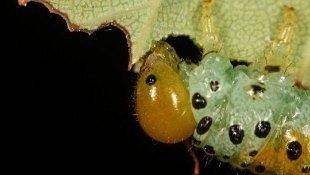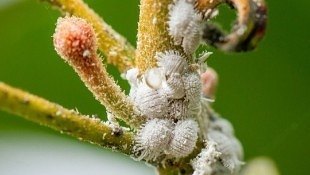

Plant Diagnosis Centre
Welcome to The Garden Superstore's plant diagnosis centre. Here you'll find remedies and solutions to numerous common problems that can affect your plants. Whether it's pests, disease or fungus, indoors, outdoors or in the greenhouse, we've got you covered.
Select a category
Pests
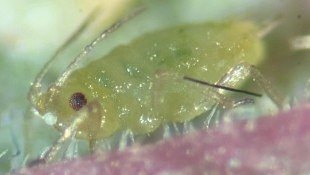
Aphids
Aphids may be better known as greenfly or blackfly. Most crops can be infested with aphids. Main symptoms: various leaf distortion, leaf yellowing, sticky upper-surface of leaves, white skins on upper-surface of leaves and possible black sooty mould from sticky honeydew produced by aphids.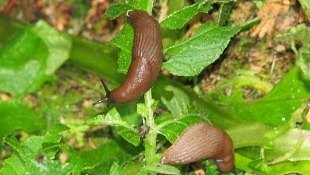
Slugs and snails
Slugs and snails are common pests in the garden. They want to eat your plants the minute they emerge as seedlings. Their presence is unmistakable with holes appearing in leaves and shimmery slime trails left trailing over plants and the surrounding ground.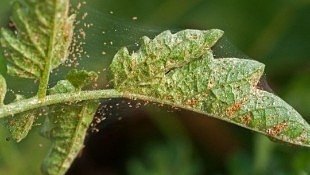
Spider Mites
The glasshouse spider mite or two-spotted spider mite Tetranychus urticae is a common pest of greenhouse plants and crops with adult females laying up to 120 eggs in 3 weeks. The mites suck the contents out of plant cells and produce characteristic leaf damage of white or silvery speckled patches. The best way to find out if your garden has them is to look for the damage rather than the mite.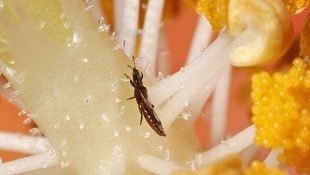
Thrips
Two species of thrips are commonly found on greenhouse plants; Western Flower Thrips (WFT) and onion or tobacco thrips. Larvae and adults pierce the leaf surface and suck out cell contents causing extensive 'silvering'.Diseases and fungi
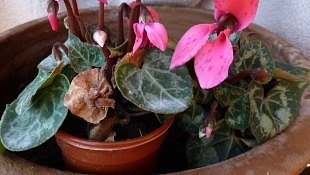
Botrytis (grey mould)
Botrytis or grey mould is common on most flowering and some soft fruit plants, including, strawberries, raspberries, cucumbers, lettuce and tomatoes. Grey mould is a disease that typically enters via a wound or stress but can infect healthy plants too. It can be found any time of year but is common under humid conditions. To reduce your risk of botrytis, make sure to quickly remove dead or decaying foliage, fruit, buds or flowers and ensure you are properly ventilating plants if they are kept under glass to reduce humidity.
Powdery mildew
Powdery mildew is a fungus that attacks a range of plants that causes a white, dusty coating across leaves, stems and sometimes fruit and flowers. Many common plants such as apples, cucumbers, peas, roses, honeysuckle rhododendrons, delphiniums, etc are susceptible to powdery mildew. The best way to protect against powdery mildew is to choose the best location for your plants, i.e in full sun (if applicable to the plant) proper soil management to ensure good drainage, proper pruning and avoiding overhead watering early in the morning and evening. If powdery mildew has set in, SB Plant Invigorator can be used as a mode of action, which also protects against common pests such as aphids and spider mite.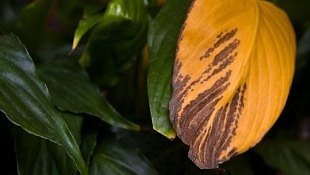
Root rot
If left untreated, root rot will kill plants and due to most of the symptoms being below the soil, it's likely to miss it until it advances. Look for common symptoms such as yellowing leaves or stunted growth and take action immediately. To reduce the risk of root rot, ensure your soil has adequate drainage before planting, roots sitting in water harbour the perfect environment for fungus. A great way of identifying root rot is to look for soft and gooey brown roots. Once identified, you'll need to determine if the plant can be salvaged, if all of the roots are brown and gooey, it's probably too late, but if some firm, white roots exist you can gently remove the damaged roots with scissors, cut just above the damaged area and then replant into fresh soil. Make sure to sterilise your utensil(s) after removing diseased roots.House plant problems

Wilting leaves
Wilting can be hard to diagnose as it could be caused by overwatering, underwatering, disease, heat stress or poorly draining soil. We recommend checking how damp your soil is by putting your finger a few centimetres to check the dryness. Following this, adjust your watering according to the dryness, try repotting in better quality soil or moving to a different location with a lower temperature.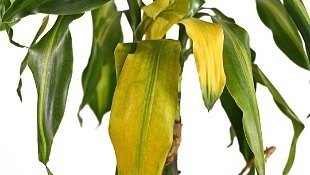
Yellow leaves
If you've got a couple of yellow leaves, generally this isn't much cause for concern, but several are a sign of bigger problems. Check your plant's location and ensure it's firstly getting enough light. Secondly, check for overwatering, overwatering is a big issue for houseplants and can lead to root rot - a good rule is to water when the soil is dry 1 inch down.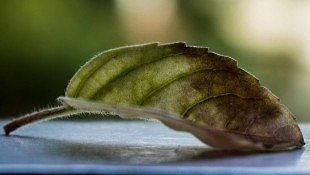
Leaf drop
If you're noticing lots of leaves dropping from your plant, this could be because your plant has been recently moved and is sensitive to its new location - allow your plant to settle in and ensure the growing conditions are still ideal for its needs. Make sure to also check the lighting conditions too.
Lacklustre leaves
If your plant's leaves are starting to look slightly discoloured and lacklustre, it could be a sign that it is lacking in essential nutrients - particularly potassium, nitrogen or phosphorus which is integral to plant health. Get a nutrient-rich fertiliser and give your plants a quick boost.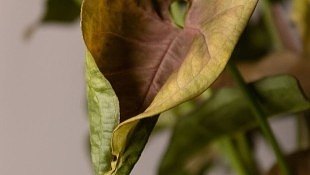
Leaf curling
This is usually due to long periods of underwatering or low humidity - make sure to water as regularly as you can and between watering, give your plant a mist.
Brown or burnt leaves
Underwatering and air quality are the main culprits for brown edges on leaves, it could also be over fertilising - so hold back on the fert for a while. Burnt leaves are a pretty clear sign your plant is simply too hot and has been burnt by the sun. Reposition your plant away from direct sunlight and avoid sitting in the strong afternoon sunlight.
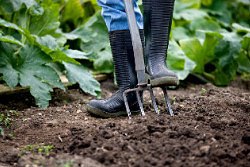
Send us your query
Get in touch with us about your plant problems. Our team is backed by expertise from our sister company Fargro - specialists who assist growers and nurseries to maintain optimum plant health on a commercial scale. Send us some details and images of the problem you're experiencing in your garden and we'll do our very best to give you some advice that proves effective. Email us at help@thegardensuperstore.co.uk or click the button below.Contact us

